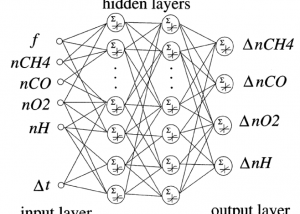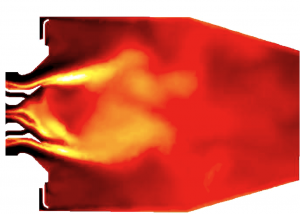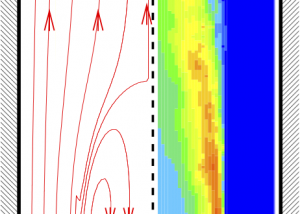We develop advanced mathematical and numerical models for the simulation of industrial and environmental processes
Methods:
- Finite-volume methods
- Lattice-Boltzmann methods
- Lagrangian particle-tracking
- Multiphase, Eulerian-Eulerian solvers
- Artificial Neural Networks
- Genetic algorithms
- OpenFOAM (TM)
Applications:
- Domestic gas burners (cooktop, heaters)
- Powerstation boilers, windboxes, heat exchangers
- Flue-gas desulphurisation units
- Automotive heat exchangers
- Fluidized bed combustion
- Aeroturbine combustion chambers
- Desuperheating units
- Heat recovery units
- Aluminum coil annealing
- Klinker furnaces in cement plants
Not just CFD...
... Fluids Engineering
We use CFD as a tool to investigate optimal solutions to practical industrial problems involving
fluid flow,
heat transfer,
chemical reaction
Our CFD Projects, Theses, Papers
LBwind: Simulation of local wind fields using Lattice-Boltzmann methods
Numerical methods for the simulation of local wind fields using the Lattice-Boltzmann method.
Towards Lean Combustion (TLC) for Aeroengines
The application of transported-PDF methods for the modeling of combustion and pollutant formation in aeroengines.
Simulation of combustion and pollutant formation in lean premixed flames
By William Vicente, Sep 2000. We simulate lean, premixed, turbulent methane and propane flames using a Transported PDF combustion model implemented in the CFD code PHOENICS. Major emphasis is placed in the prediction of pollutant formation, notably CO and NOx. (In Spanish)

Representation of chemical kinetics using Artificial Neural Networks for the simulation of turbulent reactive flows
By Javier A Blasco, Jul 2000. This thesis addresses the pioneering application of Artificial Neural Networks (ANN's) to the representation of the thermochemistry in for the simulation of turbulent combustion. The thermochemical space is automatically divided into regions using a Self-Organizing Map, and then each region is modeled with a multi-layer preceptron. (In Spanish)
Numerical simulation of instabilities in gas-liquid interfases
By Enrique López-Pages, Feb 2000. The triggering and development of instabilities at the separating surface (interface) between two streams of liquid and a gas, downstream of dividing plates with infinitesimally thin and thick train edges are studied in this Thesis. It uses the Volume of Fluid (VOF) in order to locate and follow the liquid-gas interface, and the Continuum Surface Force method to model the effects of the surface tension force.




